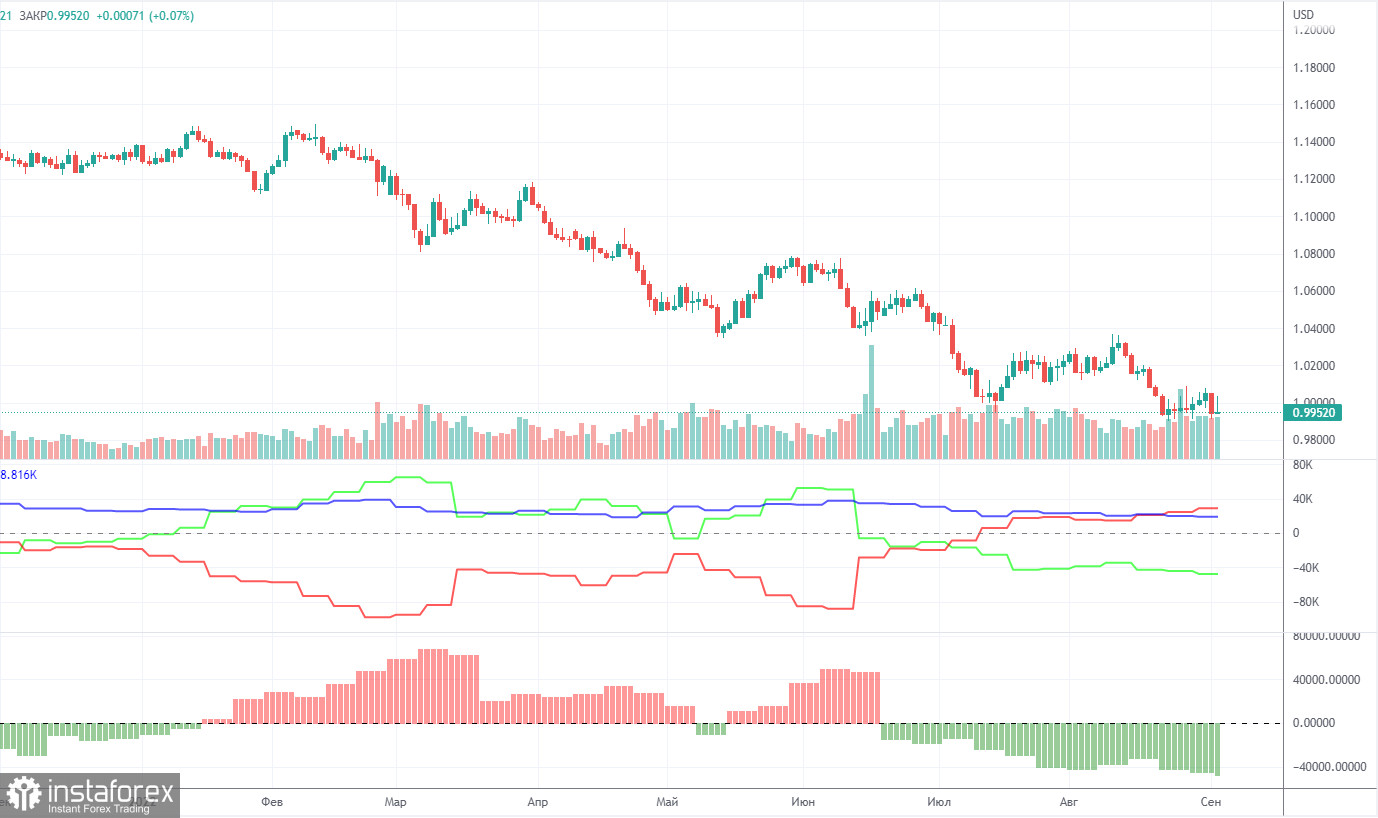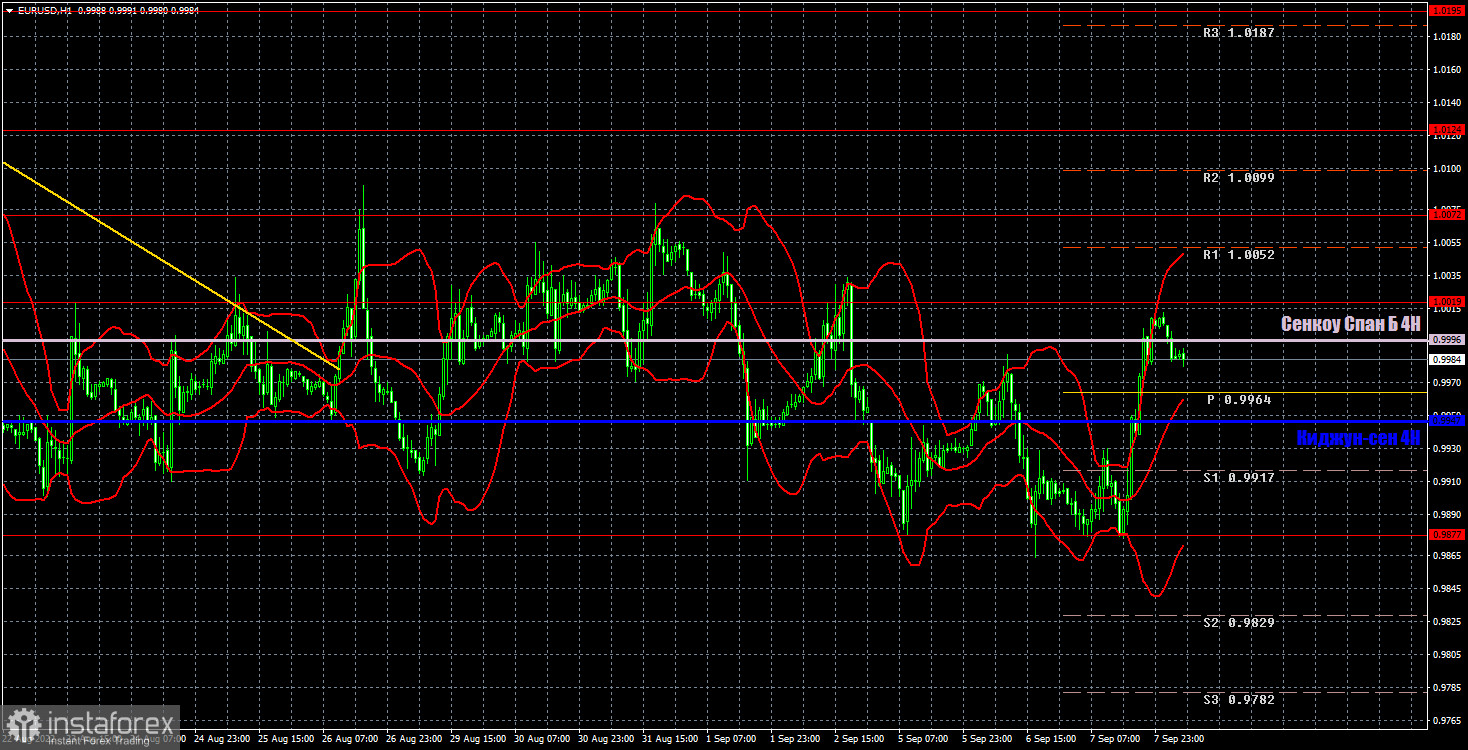EUR/USD 5M

The EUR/USD pair was once again trading near its 20-year lows on Wednesday. It seems that now everything depends on the US, the dollar and American traders, because even the trades for the umpteenth time in the US session are much more active than in the European one. It was in the second half of the day that the euro, unexpectedly for many, turned up and began an impressive growth. It was not triggered by any fundamental or macroeconomic event, because the only important event is the EU GDP report in the third estimate for the second quarter, which was published this morning. Nevertheless, such growth was to be expected, as we talked about in our last articles. The fact is that the euro is already very low and should correct at least a little from time to time. Such corrections are quite difficult to predict, since they are usually not associated with any events. Plus, today the European Central Bank will announce the results of the meeting, among which there will be a 0.5-0.75% rate hike with almost 100% probability, which, you see, is a hawkish decision. Thus, the euro really had reasons to grow yesterday.
But everything was very unfortunate in regards to the trading signals due to the flat at the European trading session. For the umpteenth time, we are faced with a situation where, in general, the movement is not bad, but due to the small number of levels or due to strange movements, it is not possible to earn money. Four trading signals were formed near the level of 0.9900, three of which turned out to be false. Traders could work out only the first two and get a small loss on the first trade, since the price there did not move even 15 points in the right direction. Stop Loss was triggered at breakeven on the second long position.
COT report:

The Commitment of Traders (COT) reports on the euro in the last few months clearly reflect what is happening in the euro/dollar pair. For most of 2022, they showed an openly bullish mood of commercial players, but at the same time, the euro fell steadily at the same time. At this time, the situation is different, but it is NOT in favor of the euro. If earlier the mood was bullish, and the euro was falling, now the mood is bearish and... the euro is also falling. Therefore, for the time being, we do not see any grounds for the euro's growth, because the vast majority of factors remain against it. During the reporting week, the number of long positions for the non-commercial group decreased by 8,500, and the number of shorts decreased by 5,000. Accordingly, the net position decreased by about 3,500 contracts. This is not much, but this is again an increase in the bearish mood among the major players. After several weeks of weak growth, the decline in this indicator resumed. From our point of view, this fact very eloquently indicates that at this time even commercial traders still do not believe in the euro. The number of longs is lower than the number of shorts for non-commercial traders by 47,000. Therefore, we can state that not only does the demand for the US dollar remain high, but that the demand for the euro is also quite low. The fact that major players are in no hurry to buy the euro may lead to a new, even greater fall. The euro has not been able to show even a tangible correction over the past six months or a year, not to mention something more.
We recommend to familiarize yourself with:
Overview of the EUR/USD pair. September 8. The market is beginning to shift its focus away from geopolitics and fundamentals to other factors.
Overview of the GBP/USD pair. September 8. Andrew Bailey pulled down the pound again.
Forecast and trading signals for GBP/USD on September 8. Detailed analysis of the movement of the pair and trading transactions.
EUR/USD 1H

The pair continues to trade on the hourly timeframe in a mode very similar to the "swing". The price has not dropped much in the last few days, so the lower border of the horizontal channel has simply shifted to the level of 0.9877. And now we have the 0.9877-1.0072 channel. The channel is almost 200 points wide, but the price is stubbornly trading inside it. We highlight the following levels for trading on Thursday - 0.9877, 1.0019, 1.0072, 1.0124, 1.0195, 1.0269, as well as Senkou Span B (0.9996) and Kijun-sen (0 .9947). There is still no level below 0.9877, so there is simply nothing to trade there. Ichimoku indicator lines can move during the day, which should be taken into account when determining trading signals. There are also secondary support and resistance levels, but no signals are formed near them. Signals can be "rebounds" and "breakthrough" extreme levels and lines. Do not forget about placing a Stop Loss order at breakeven if the price has gone in the right direction for 15 points. This will protect you against possible losses if the signal turns out to be false. The ECB will announce the results of its meeting on September 8, and then for the first time in a long time, ECB President Christine Lagarde will make a speech. Federal Reserve Chairman Jerome Powell is speaking in the US today. Looks like we're in for a very interesting day...
Explanations for the chart:
Support and Resistance Levels are the levels that serve as targets when buying or selling the pair. You can place Take Profit near these levels.
Kijun-sen and Senkou Span B lines are lines of the Ichimoku indicator transferred to the hourly timeframe from the 4-hour one.
Support and resistance areas are areas from which the price has repeatedly rebounded off.
Yellow lines are trend lines, trend channels and any other technical patterns.
Indicator 1 on the COT charts is the size of the net position of each category of traders.
Indicator 2 on the COT charts is the size of the net position for the non-commercial group.





















